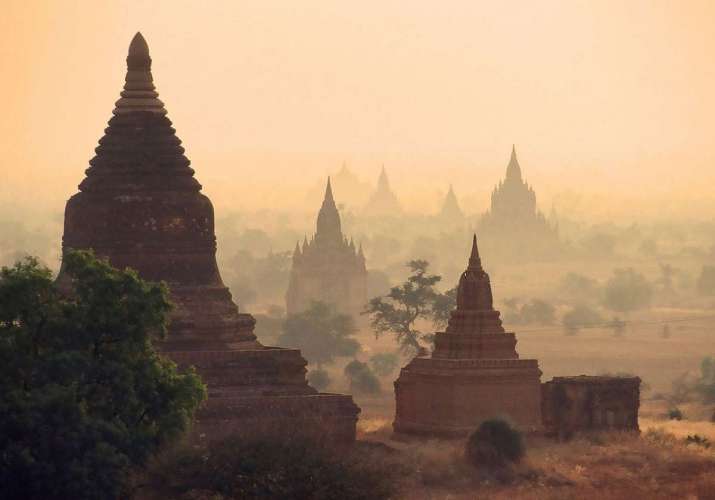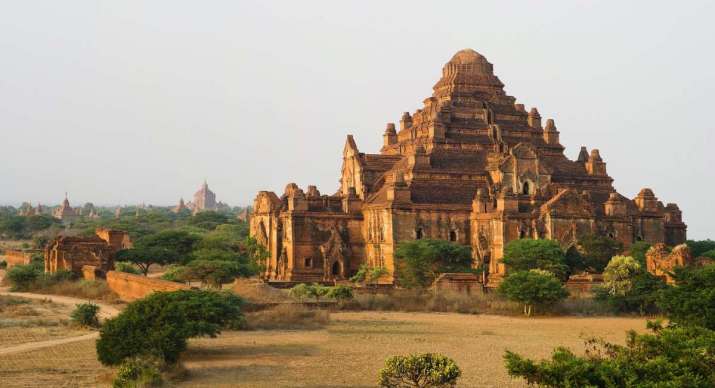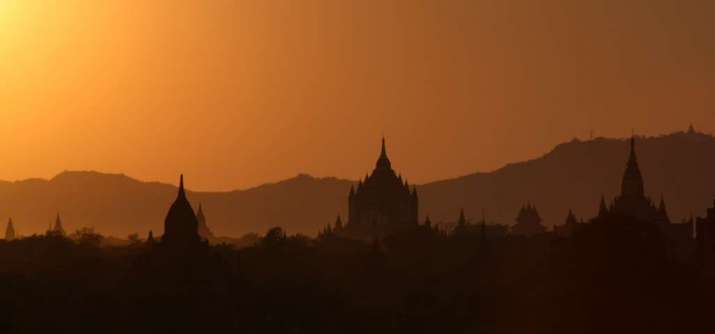NEWS
Myanmar Renews Bid to Gain World Heritage Status for Bagan Archaeological Zone
 From wikipedia.org
From wikipedia.orgMyanmar has renewed its efforts to seek World Heritage status for the renowned Bagan Archaeological Zone, with the country’s Ministry of Religious Affairs and Culture taking new steps to persuade UNESCO that it has a long-term blueprint for the ancient Buddhist city that will meet the UN body’s strict heritage standards. Chief among these is a pledge to reduce and relocate the number of hotels and other modern structures in the area.
Located on the banks of the Irrawaddy River in Myanmar’s Mandalay Region, Bagan Archaeological Zone is one of the country’s principal tourist attractions and is also popular with Buddhist pilgrims, who come to visit the thousands of ancient monuments spread over the 42-square-kilometer plain ringed by mist-covered mountains. The area is home to the largest and densest concentration of Buddhist temples, pagodas, stupas in the world, with thousands of structures dating to the 10th–14th centuries, when the ancient city was the capital of the Kingdom of Pagan (849–1297).
The world heritage application for Bagan is divided into two parts, the first focusing on detailing the nature of the site and mapping the archaeological monuments within it, while the second requires a complete management plan for conserving and maintaining the site for the future. Myanmar initiated the first part of the application process with UNESCO in September.
 Dhammayangyi temple, Bagan. From wikipedia.org
Dhammayangyi temple, Bagan. From wikipedia.org“We already submitted part one. UNESCO will get back to us in November with suggestions,” said U Aung Aung Kyaw, director of the Department of Archaeology, National Museum and Library. “We will re-submit the first part in February [2018] with the suggested corrections, along with the management plan. Then experts from UNESCO will check the situation on the ground in June and July 2018.” (Myanmar Times)
UNESCO’s main objections to granting World Heritage status since Myanmar’s first attempt in the mid-1990s have included the numerous hotels, resorts, shops, and other businesses that clutter the historic site, as well as poorly managed and executed conservation and renovation work that has been carried out on many of the ancient structures. The military junta that controlled the country at the time also mismanaged the project by allowing the construction of a two-lane road and a golf course among the ruins.
More recently—notably under the 2011–16 administration of former president Thein Sein—Myanmar has embarked on a major tourism drive. Bagan is now visited by hundreds of thousands of foreign tourists each year, with 282,387 international visitors to Bagan Archaeological Zone recorded in 2016. Permits to build 42 new hotels or resorts in the area were granted in 2013, then revoked the following year. Earlier this year, permits were reissued for 25 of the developments.
“The 17 hotels which were denied were situated within the archaeological zone or heritage zone,” said Aung Aung Kyaw, noting that discussions to grant permits to build on sites outside the heritage zones were ongoing. He added that sites vacated by relocated hotels would be reserved as public spaces. (DVB)
The ancient kingdom of Pagan was the first to unify the regions that would later form modern-day Myanmar. The kingdom’s 250-year rule over the Irrawaddy valley and its periphery facilitated the spread of the Burmese language and culture, and the propagation of Theravada Buddhism in Southeast Asia. More than 10,000 Buddhist temples, pagodas, and monasteries were constructed in the Bagan plains alone at Pagan’s height between the 11th and 13th centuries. Today, more than 2,200 temples and pagodas survive, however many of the centuries-old Buddhist monuments remain in various states of disrepair, while others have been restored in recent years in cooperation with UNESCO advisors.
“. . . We will meet with residents in Bagan and try to explain to them how it would be beneficial for them if Bagan becomes a World Heritage site,” said Department of Archaeology, National Museum and Library deputy director general U Thein Lwin. “We have to make them understand the prestige gained by being listed as World Heritage status. We also have to explain to them the rules and regulations that all of us should abide by.” (Myanmar Times)
 From wikipedia.org
From wikipedia.orgMyanmar is a predominantly Theravada Buddhist country, with 80.1 per cent of the population of almost 48 million people identifying as Buddhists, according to 2010 data from the Washington, DC-based Pew Research Center. Christians, folk religions, and Muslims account for the bulk of the remainder. Buddhist monks, venerated throughout Burmese society, are believed to number around 500,000, with an estimated 75,000 nuns in the country.
See more
Burma pledges to relocate hotels from Bagan archaeological site (DVB)
Bagan on way to UNESCO listing as world heritage site (Myanmar Times)
Plans to make Bagan UNESCO World Heritage site under study (Myanmar Times)
Related news from Buddhistdoor Global
Buddhist Pagoda Collapses, Thousands Displaced by Rising Floodwaters in Myanmar
Disrespectful Visitors the Bane of Bagan’s Ancient Buddhist Monuments
Three Dead, Scores of Ancient Buddhist Temples Damaged in Myanmar Quake
Yangon’s Ancient Sule Pagoda Receives a Glistering Facelift
Worst Flooding in Decades Threatens Buddhist Heritage Sites in Myanmar
Related features from Buddhistdoor Global
Breathing New Life into Myanmar’s Monastic Schools
Thabarwa Centre — A Refuge for the Homeless in Myanmar
Singapore Exhibition Sheds Light on Ancient Treasures from Myanmar














